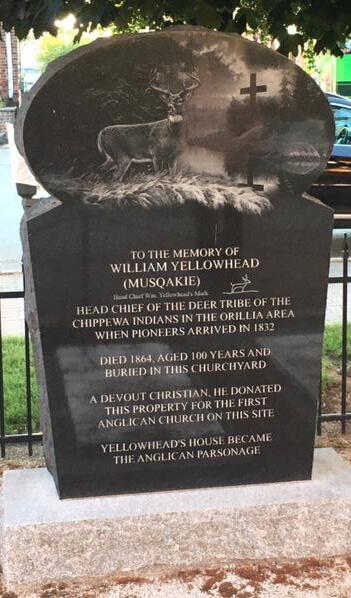
2 minute read
The Indian Village, The Indian Department, and Missionaries: A Brief History of Early Orillia Settlement
from Winter 2023 Mzinigan
by bencousineau

The Result
Advertisement
The correspondence in the previous pages shows how many moving parts were involved in what was a chaotic time period. Quite often when we look at history, it is easy to forget the day-by-day life of those involved, and instead we focus on major events rather than the many small decisions that lead up to them. Different individuals and groups had varying goals for Orillia and our ancestors were heavily involved. Settlers wanted land, the church wanted schools and churches (as well as people to put on the pews) and the Indian Department wanted our ancestors centralized, dormant, and manageable.
The result was the beginning of the most frantic time in our community’s history. Our ancestors moved village sites four times in ten years. The Methodist and Anglican churches were constantly fighting about who was better suited to teach religion to our ancestors. The Indian Department was in the middle trying to control everything. And amidst it all, our ancestors were trying to make the best of a difficult situation, in which they had the least control but were the most impacted.
There was an Indian Council House as well as a home for Chief Yellowhead built by the government around 1831. The buildings were located in what today is downtown Orillia (where St. James Church stands, across from TD Bank). The government also built homes and a school. The buildings were a part of the Coldwater Narrows reserve and were a key part in convincing our ancestors to relocate to the reserve. But fighting between Methodist and Anglican sects complicated matters for the Crown. Both religions wanted to utilize the buildings to teach their versions of religion. Around the time that our ancestors were being convinced to relocate to the reserve, Orillia was starting to become a busy place of white settlement. Part of what ultimately led to the taking of the Coldwater Reserve by the Crown was petitioning by these settlers. The settlers wanted land and the religious groups wanted the buildings to utilize as the first places of worship in Orillia. Furthermore, the government felt that our ancestors were not “progressing” (i.e. resisting assimilation) as they wished.
In 1836 the Coldwater Reserve Narrows was allegedly surrendered. Beginning in around 1838, our ancestors began moving to Rama township, where Chief Yellowhead had started to purchase plots of abandoned farmland. More details about these land purchases can be found in the Fall Our Heritage Place Mzinigan. In June 1852 and additional 20 acres of Orillia was surrendered by Chiefs Yellowhead, Nanigishkung, Bigwin, Young, Snake, Aissance, and two others (names are illegible on the surrender).
The Indian Village and the Coldwater Narrows Reserve were shortlived and shortsighted attempts at controlling and assimilating our ancestors. Through it all, our ancestors moved village sites 4 times in ten years. With a population of around 185, this would have been difficult. As Chief Aissance remarked at an 1846 Council meeting regarding moving to Manitoulin Island, “I have have already removed four times; and I am too old to move again”.
Chief Yellowhead’s home as well as the Indian Council house ultimately did become part of the church. The Anglican church began preaching in the old Council house and the minister lived in Yellowhead’s home. Eventually, the massive church called St. James Church was built in 1890 and still stands today.
Yellowhead’s connection to his former home remained. After his death around 1864, he was said to be buried on the property. There is a monument recognizing the burial of Yellowhead, somewhere, on the church property. Yellowhead, apparently a devout Christian, was said to have donated the property to the church. Whether that “donation” was a part of the larger Coldwater Narrows alleged surrender or something he personally worked out with the church requires additional research. Early indications and a lack of evidence of the fact suggests that no, Yellowhead did not personally donate his property to the church...but more updates will be provided once research is complete.










